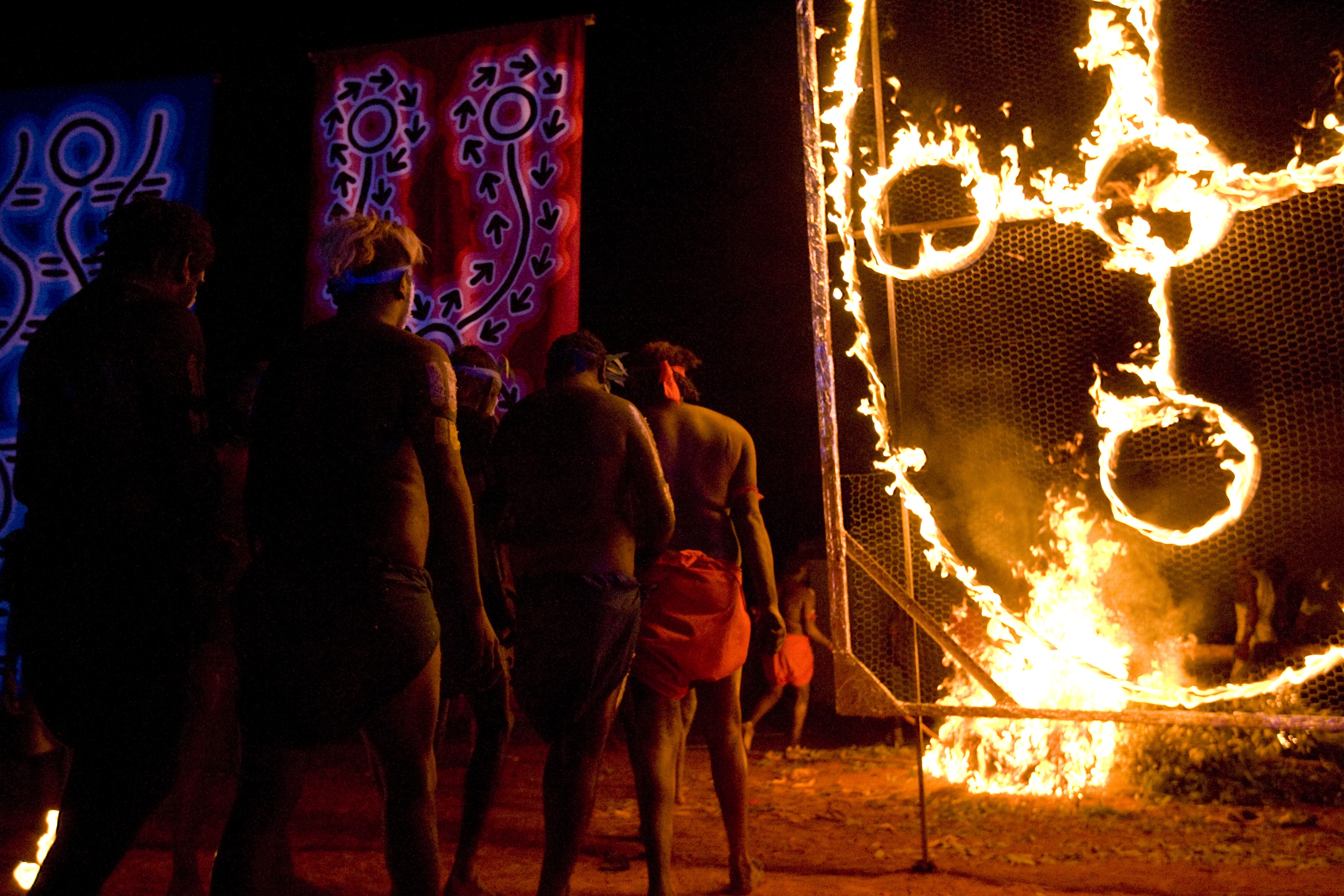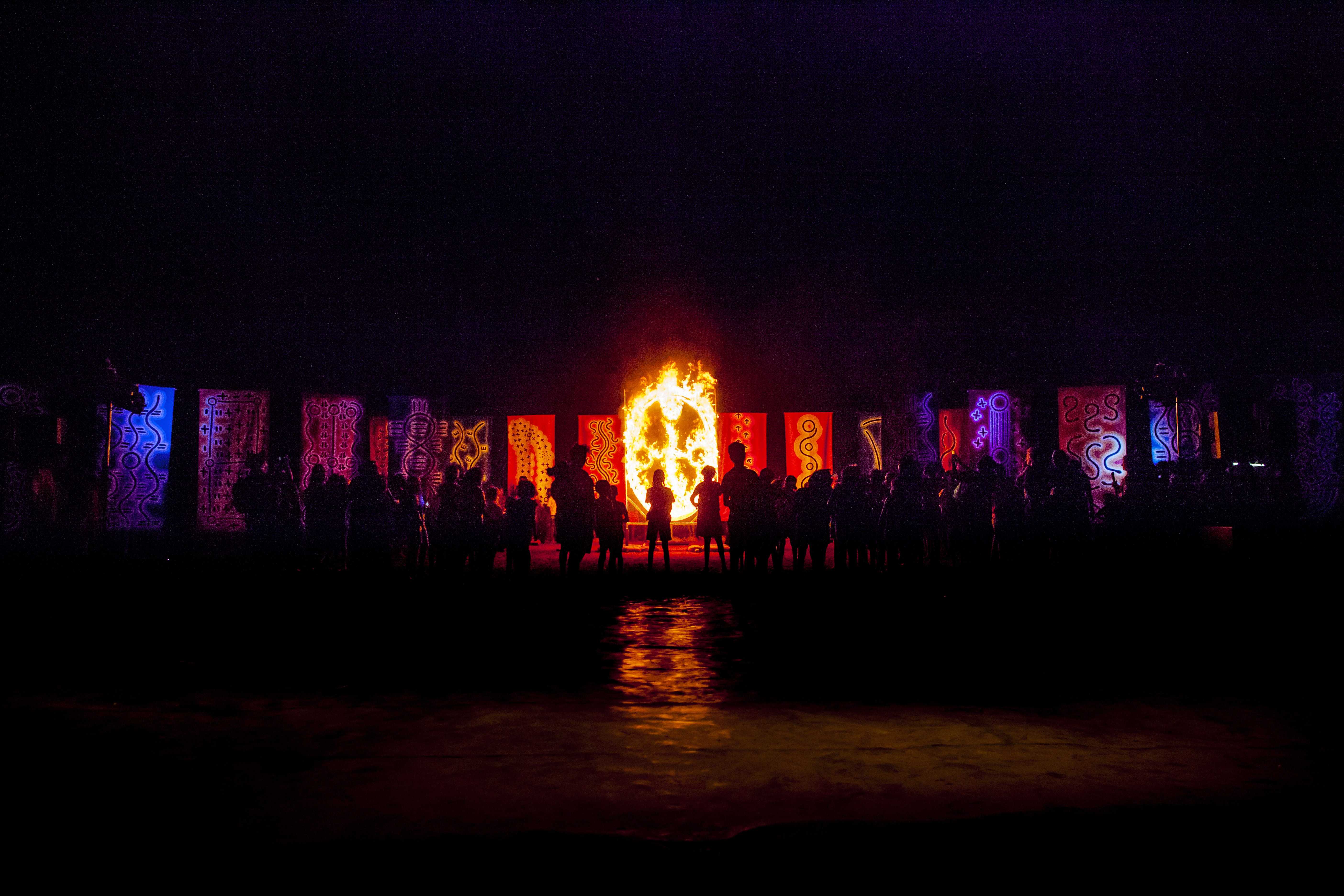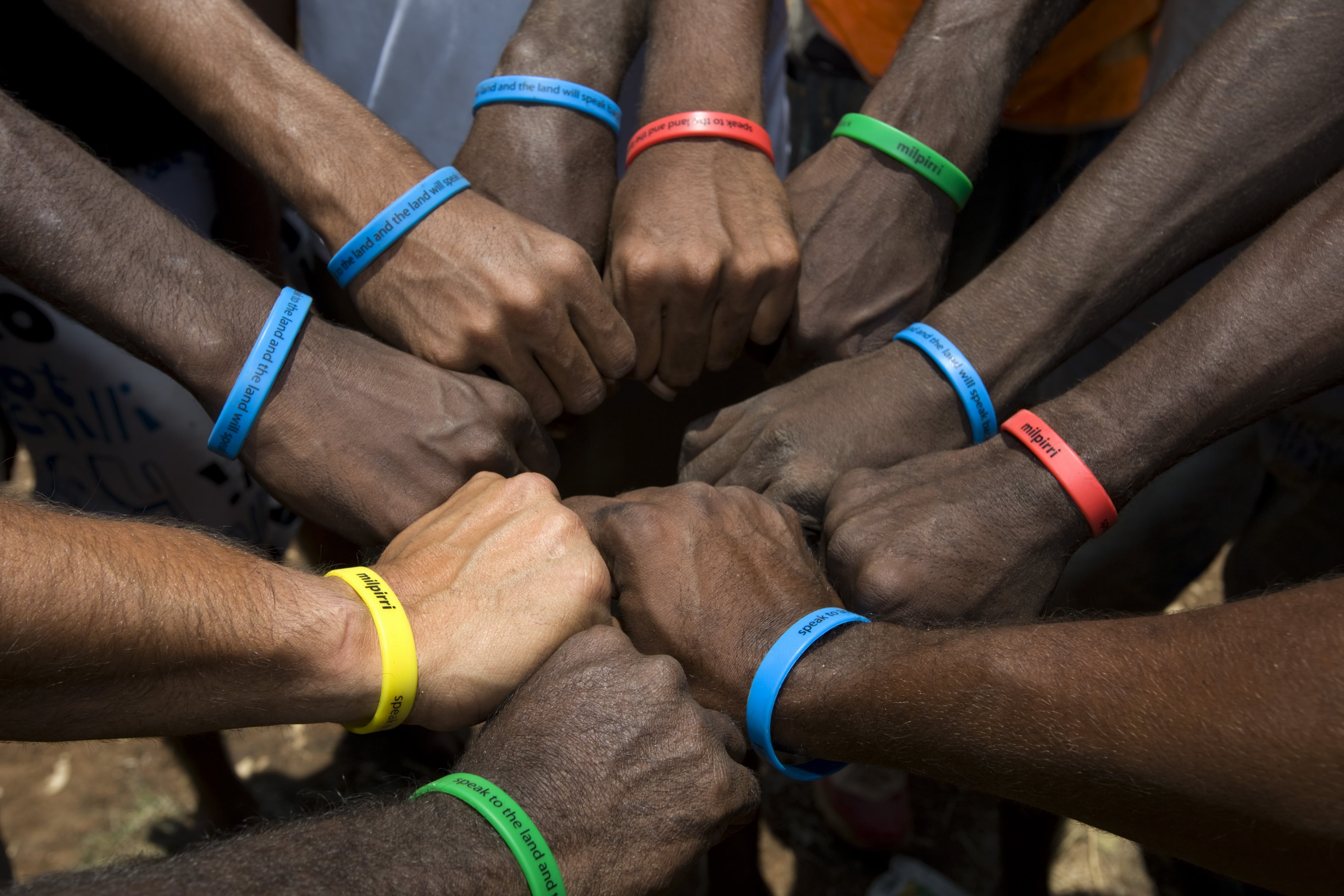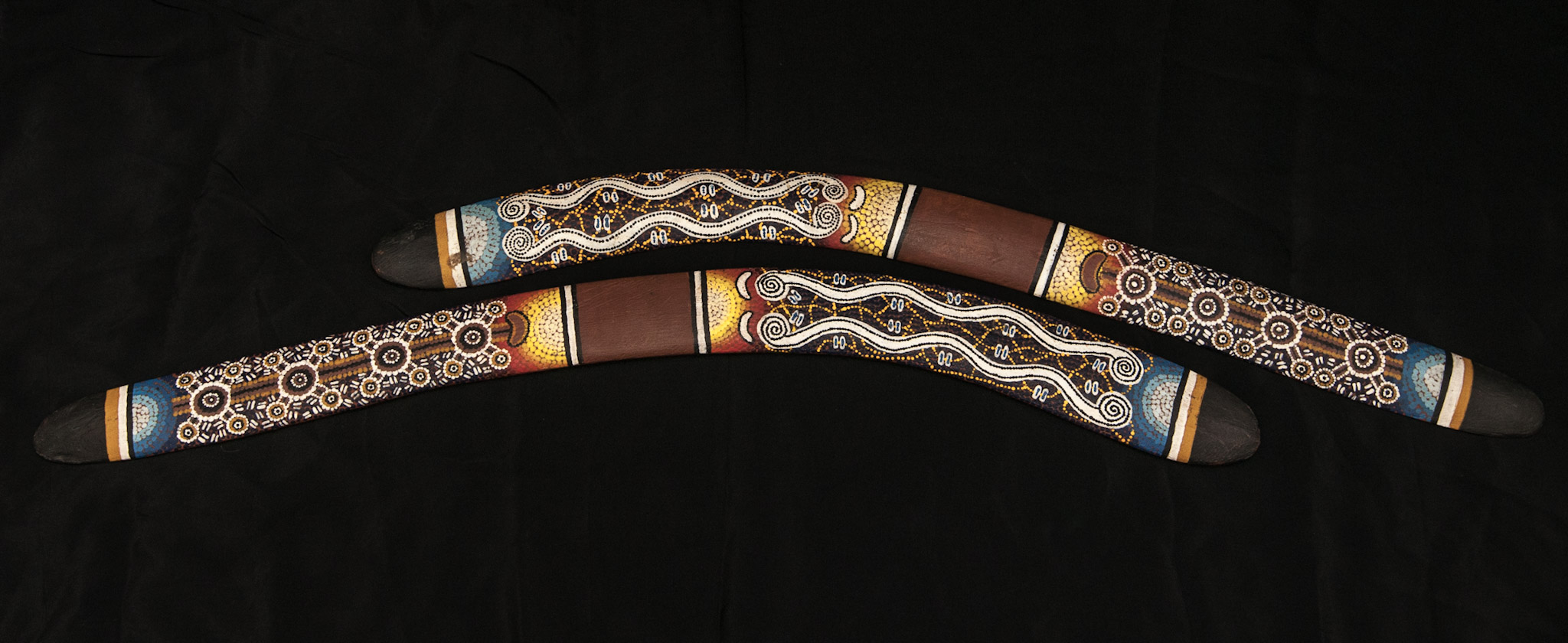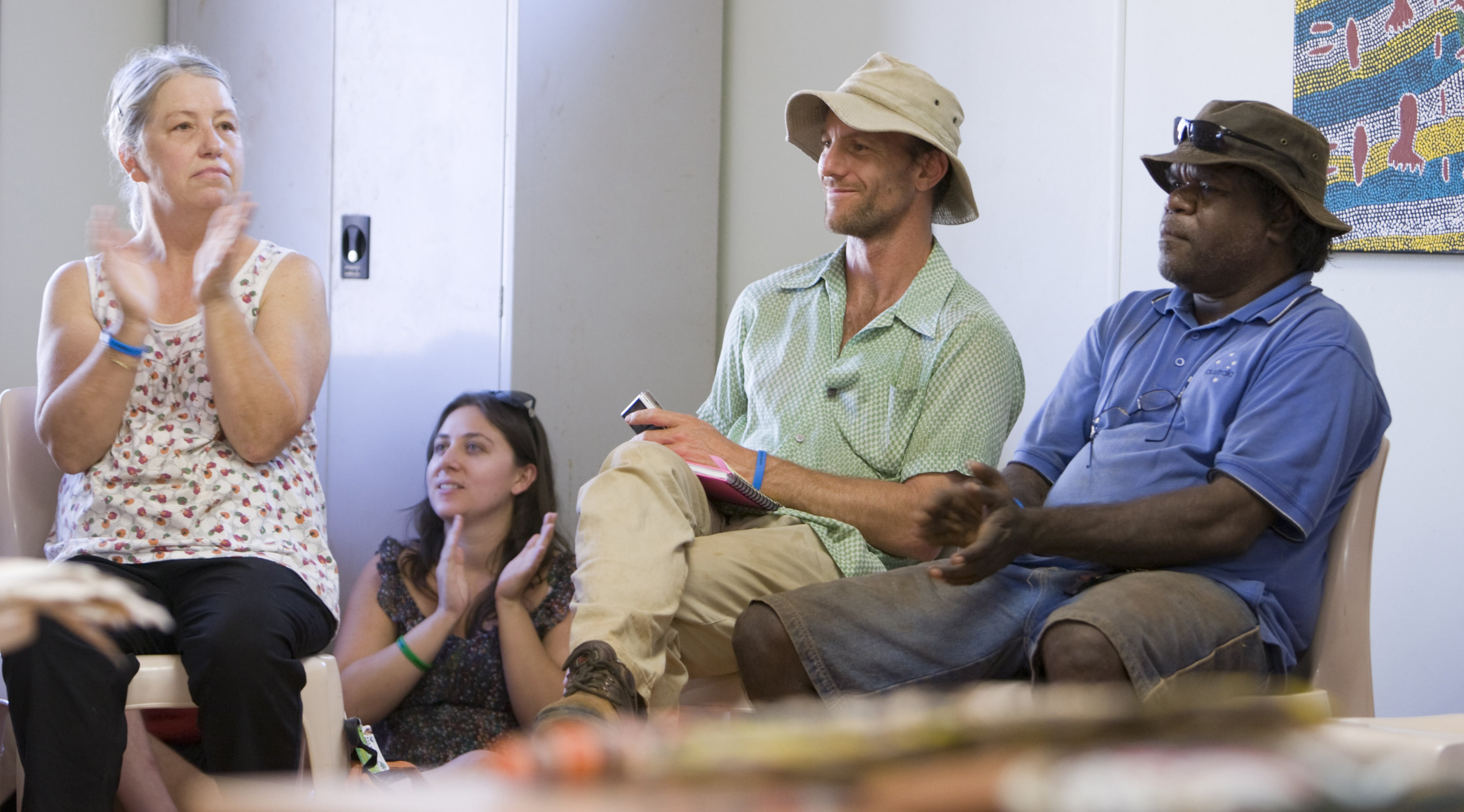Milpirri Banner - NGURRA-KURLU (The Home Within)
Design
Ngurra-kurlu is a new design. The Ngurra-kurlu design has appeared as a fire banner set within the Milpirri banners for several performances. The smaller circles represent the five pillars of Warlpiri culture: Land, Law, Language, Ceremony, and Kinship/family.
Steve Jampijinpa Patrick explaining the five pillars of Warlpiri culture - Video
Home
Alongside the Milpirri performance Steve Wanta Jampijinpa Patrick developed many additional aspects.
The paper Ngurra-kurlu shows a way of working with Warlpiri people. Written by Steve Wanta Jampijinpa Patrick, Miles Holmes and (Lance) Alan Box, they explored how we can find a sense of home within ourselves by acknowledging Land, Law, Ceremony, Language and Kinship/family.
Read Ngurra-kurlu a way of working with Warlpiri people - Story
Law
Read this articail "What is the dreaming in Warlpiri" - Story
Kinship
Kinship: Kurdiji Videos: See Jerry Jangala explaining the different skin groups - Video
In the first Milpirri in 2005 the allocation of four colours were given to the sixteen Warlpirri skin names allowing a visible way of showing kinship relationships. The colour groups are seen in the banners and the Milpirri performers are dressed in one of the four colours in accordance to their kinship relationship. They also wear corresponding wristbands
Red (Jupurrula, Jakamarra, Napurrula, Nakamarra), Yellow (Japaljarri, Jungarrayi, Napaljarri, Nungarrayi), Green (Japangardi, Japanangka, Napangardi, Napanangka) and Blue (Jangala, Jampijinpa, Nangala, Nampijinpa).
In Lajamanu School assemblies the students were sat in their colour groups. Begun as a way to illustrate how we are connected, and to give a visible sense of belonging, the colour system has become commonplace within the Lajamanu.
Ceremony/Performance
The Milpirri performance (which draws on themes from Warlpiri ceremony) grew out of the first youth suicide in Lajamanu. Conceived by Steve Wanta Jampijinpa Patrick, Jerry Jangala Patrick, David McMicken, and Tim Newth, it had two key aims: to create a sense of belonging to each person who called Lajamanu home, and to enable two-way learning between Kardiya (non Aboriginal people) and the Warlpiri people of Lajamanu.
Since 1988 Lajamanu and Tracks Dance Company artists have been working together. The relationship has produced performances that have become an iconic part of the place and company. The Milpirri performances are a prime example.
Explore 30 years of Lajamanu and Tracks collaborations and performances - Photos / Story / Video
Interpretation
Steve Wanta Jampijinpa Patrick interprets aspects of Ngurra-kurlu in another way:
Our homeland sounds become our words
Our words become our songs
Our songs become our ceremonies
Our ceremony becomes out teachings
Our teachings become our belief
Our belief shows who we are



